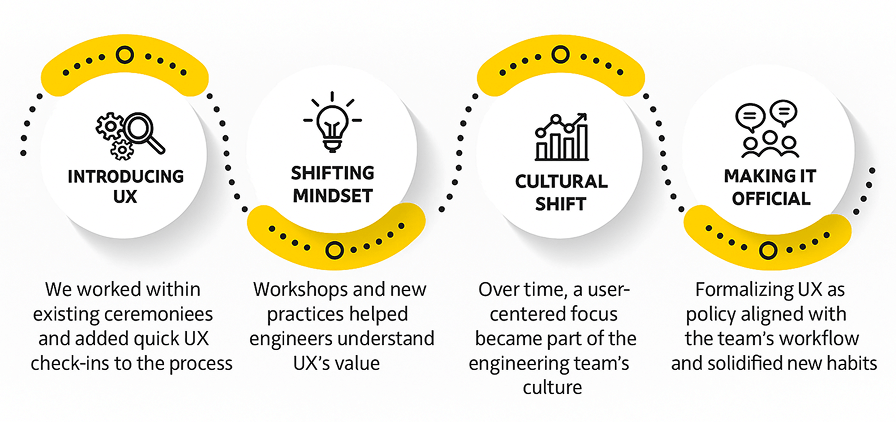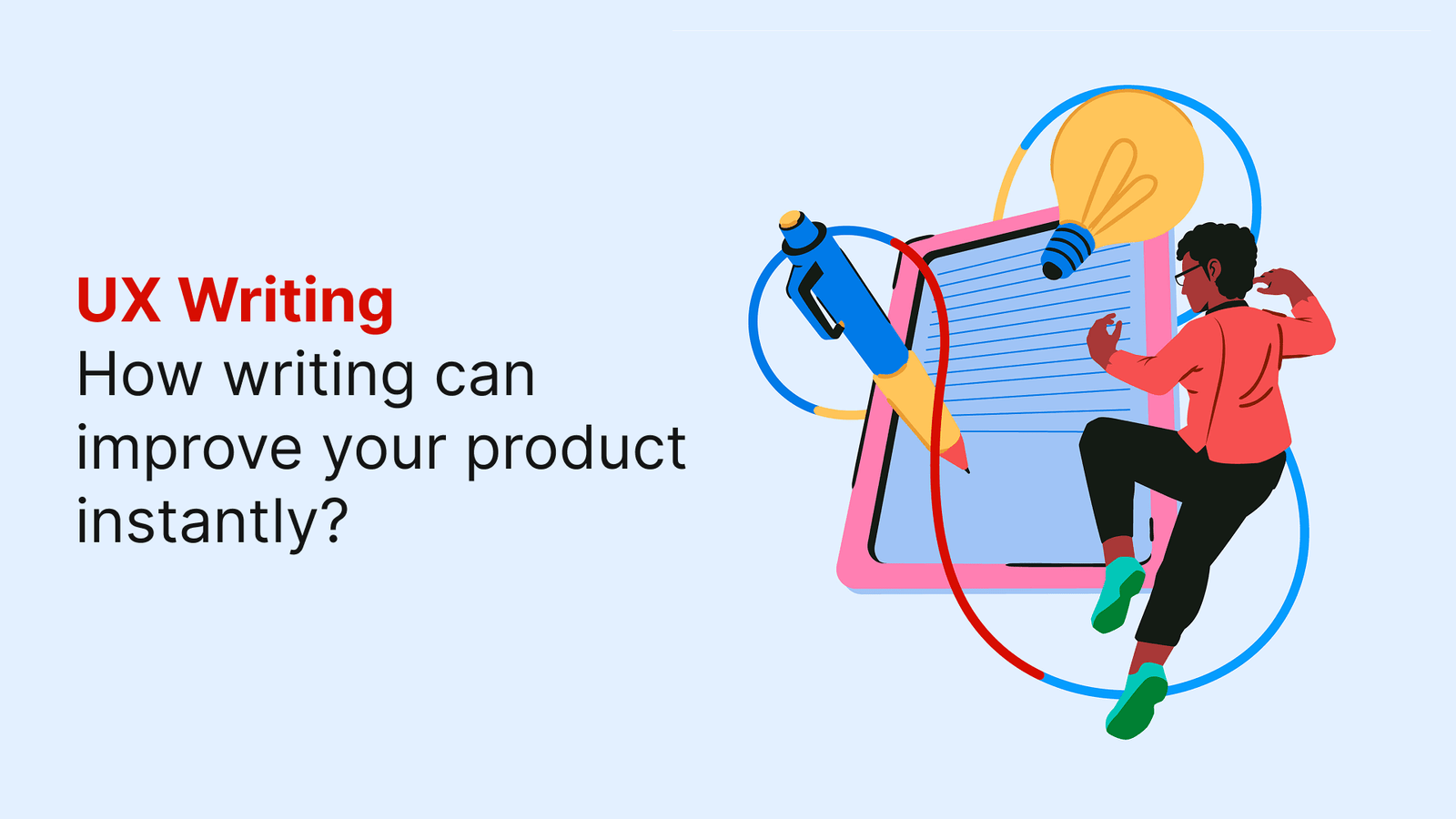Bringing UX into a fast-moving engineering organization without disrupting delivery or adding overhead
What Problem We Walked Into?
The engineering team owned the entire product flow. There were no designers involved. Features shipped quickly, but UX issues piled up.
What looked like speed was actually creating silent delays:
- Users struggled with confusing flows and inconsistent layouts
- Fixes came late, often during QA or post-release
- Rework became routine and costly
This was starting to affect trust in the product. Internally, teams felt the pressure of fixing issues that could have been avoided with earlier design thinking.
The Challenge
Leadership wanted to improve UX, but worried that involving designers would slow delivery down.
They assumed UX would mean:
- More meetings
- More documentation
- More steps between idea and release
Our job was to change how UX was done, not just introduce it as another layer. We had to show that UX Maturity could move at the speed of engineering, without disrupting their workflow.
What Process We Followed?
We didn’t roll out a new UX process overnight. We followed a quiet, embedded path that respected engineering momentum and changed the culture from within.

1. We introduced UX lightly inside existing rituals
Instead of creating new meetings or approvals, we made space for UX inside what was already working:
- 5-minute design check-ins during sprint planning
- Comments added directly in Figma
- Quick async feedback during builds
This helped the team get value from UX without changing how they shipped.
2. We ran lightweight workshops to shift the mindset
Engineers were never asked to follow abstract design principles.
We showed them how small improvements had real outcomes:
- Clearer forms reduced support queries
- Consistent patterns sped up implementation
- Better microcopy reduced confusion
Design became a tool to reduce friction, not slow things down.
3. UX became part of how teams worked
We started hearing engineers ask things like:
- “Is this the clearest path for the user?”
- “Can we simplify this step?”
That was the real shift. UX stopped being something added on. It became something built in.
4. We formalized the process only after habits were in place
Once the team was already working this way, we helped leadership make it official.
- UX checkpoints were added to delivery
- Designers became part of sprint planning
- No pushback, because it felt natural
The culture had already changed. We just gave it structure.
What We Changed?
We stayed close to how engineering already worked, and shaped design around that.
There was no long setup phase or heavy process rollout.
We focused on:
- Bringing UX thinking earlier into delivery
- Simplifying complex flows and forms
- Creating repeatable design patterns that saved dev time
- Keeping feedback fast and in-context
Instead of running parallel to engineering, we worked inside their system and made it smoother.
What Result It Gave?
Six months later, the difference was visible across every level of the product and team.

- Engineers made fewer rework-heavy decisions
- UX was part of planning, not just polish
- The product became easier to use, easier to test, and easier to scale
- Team velocity stayed high, but with fewer surprises
- Leadership saw real results without needing more meetings or layers
Most importantly, the team stopped seeing UX as a step and started seeing it as a strength. That mindset shift was the real outcome.





